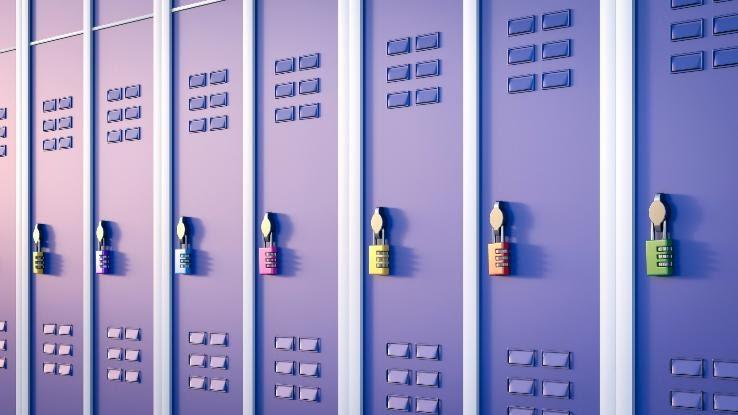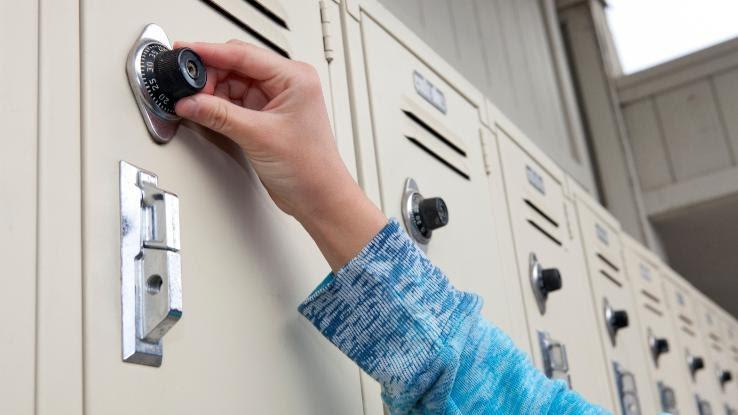How Many Possible Combinations of 3 Numbers Are There?

If each digit in a 3-digit lock contains the numbers 0 through 9, then each dial in the lock can be set to one of 10 options (0, 1, 2, 3, 4, 5, 6, 7, 8 or 9). As such, that means there are 1,000 different possible combinations. Today, 3-digit padlocks are still commonly used on bike locks, in built-in luggage locks, and for securing storage sheds.
The more digits, the more combinations. Things get a bit more complicated with 40-digit combination locks, like those commonly used on lockers. For example, the standard Master Lock has 64,000 possible combinations. So, let’s take a look at the odds of cracking each type of lock.
3-Digit Lock Combinations
Despite the fact that 3-digit padlocks have 1,000 different code possibilities, there are ways to open them without knowing the combination. Fortunately, the key to cracking them has little to do with trying out hundreds of different number combinations. It’s more a matter of mastering the subtle changes in the feel of the lock as you scroll through the different numbers.

To try it for yourself, grab a padlock that you know the combination to and go through the following steps:
- One of the main tricks to cracking these kinds of locks is being able to consistently apply enough pressure to pull upwards on the shackle (the hook-shaped part of the lock). You’ll want to pull the shackle away from the lock body the same way you would if you were opening it.
- The easiest way to do this is to attach the lock onto a sturdy object so that you can pull the lock body down.
- Start on the bottom row of numbers and scroll through each one, while maintaining the upwards pressure on the lock handle.
- When you land on the correct number, you should hear a slight click. With enough practice, you can also feel the interior wheel “fall into place,” which will make the dial slightly harder to turn.
- After arriving at the first correct number, move up to the second dial and repeat the process.
- You’ll repeat the same process with the third dial, but it’s a bit easier to tell when you land on the right number because the lock should open.
How to Figure Out a Combination Lock
While combination locks, such as a standard 40-digit Master Lock, tend to be a little harder to crack without the winning combination, it is possible with enough practice. The key to opening a combination lock without the combination lies largely in applying the right amount of upwards pressure to the shackle.

As with a padlock, you can either attach the combination lock to a sturdy object (only recommended if you know the combination) or gently pull it upwards with the finger or thumb of your left hand. If you pull up with too much pressure, the number dial won’t move at all. But if you don’t pull up with enough pressure, the dial will spin freely without revealing much.
The trick? Master the correct balance between the two extremes. To figure out the combination, try the following:
- Set the lock to zero.
- Continue applying just enough upwards pressure on the shackle to gently pull it away from the lock body.
- Begin rotating the dial clockwise until you hear a small click or feel resistance as the lock catches at a certain number. Rotate the dial a few times to make sure that your shackle pressure is correct. Note: If you feel resistance every few numbers, you’re applying too much upwards pressure.
- When you have the pressure just right, you should notice that the lock only catches on one number on every full turn.
- Add 5 to the number that consistently catches. That’s the first number in the combination.
- From your first number, begin turning counterclockwise, applying the same pressure to the shackle.
- Once you’ve completed one full turn, pay close attention as you feel for the second number.
- The lock may bump a bit as you turn, but you’ll eventually land on one number that produces a lot more resistance, making it hard to continue turning. That’s your second number in the combination.
- From there, all you have to do is turn the dial clockwise again until the shackle releases and unlocks, which will happen when you, inevitably, land on the third number.
How to Tell How Many Combinations Are Possible
If you want to know how many possible combinations there are to any lock, then you can use a mathematical concept called permutation. Permutation indicates the number of ways that a certain set of variables (numbers, in this case) can be arranged.

There are two types of permutation formulas: one that allows for repetition and one that doesn’t. In the case of a combination lock, we’ll use the first type of formula because the same number could be used twice in a combination. For instance, a lock’s combination could be 9, 3, 9.
The formula to figure out the many possible combinations reads: Nr. The letters in this equation stand for:
- N = the total number of variables (in this case numbers) to choose from
- r = how many of “N” there are to choose.
In order to explain how this formula works, let’s use the case of a 3-digit padlock with three dials, each of which features the choices 0 through 9. In this case, N = 10 because there are 10 total numbers to choose from (0,1,2,3,4,5,6,7,8,9).
We need to correctly place each of these 10 numbers 3 times, so r=3. Plugging those numbers into our formula, we end up with:
- 103 = 1,000
This means that there are 1,000 possible combinations for our 3-digit lock. Meanwhile, in the case of a 40-digit combination lock, we could use the same formula and simply rewrite it to account for the 40 different choices of numbers on the dial. Since we need to find the correct choice 3 times, our formula would read:
- 403 = 64,000
This is how we arrive at the fact that there are 64,000 possible solutions to a combination lock. Luckily, we now know a few tricks that can help us open both types of locks without testing every possible combination manually or aimlessly.





